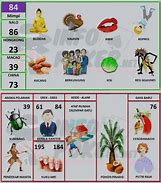
Airports in Bola and in the neighbourhood
Airports nearest to Bola are sorted by the distance to the airport from the city centre. Follow relate airport hotel guides for accommodation booking.
Daftarkan Bisnis di Google Business Profile
Yang pertama kali harus kita lakukan adalah mendaftarkan bisnis kita di Google Business Profile yang dulu disebut sebagai Google My Business. Jadi, ini adalah satu layanan dari Google di mana kita bisa mendaftarkan bisnis di Google dan tentu saja gratis. Jadi, tinggal kita daftarkan, verifikasi dan lengkapi semua informasinya. Dan kita juga bisa menambahkan foto dan lain-lain.
Setelah kita daftarkan bisnis dan kita verifikasi, maka nanti bisnis kita bisa dioptimasi agar muncul juga di hasil pencarian organik dan juga bisa diiklankan.
Nah, ketika kita mendaftarkan bisnis, kalau bisa menggunakan email yang sama dengan akun Google Ads-nya. Tapi, kalau memang kebetulan berbeda email-nya, dan bisnis sudah terdaftar, silahkan akun atau email Google Ads-nya bisa didaftarkan sebagai admin di akun Google Business Profile. Sehingga nanti akun dari Google Business Profile ini bisa terhubung atau terkoneksi dengan akun Google Ads-nya.
Langkah berikutnya, kita harus membuat Search Campaign. Jadi, kita buat campaign baru, yaitu Search Campaign dan jangan lupa kita tambahkan aset Location.
Keterangan Select location source:
Location Group: kalau kita memiliki banyak cabang dan kita kelompokkan berdasarkan lokasi, kita bisa memilih ini dan grupkan setiap lokasi melalui New location group yang berada di sebelah kiri bawah.
All synced locations: menggabungkan semua lokasi yang tersedia.
Jadi, disesuaikan saja.
Selain itu, untuk melihat tampilan iklannya nanti, bisa lihat di bagian sebelah kanan. Jadi, nanti dia bisa muncul seperti ini, di bawah dari iklan search-nya dan kalau diklik bisa langsung masuk ke Google Maps.
Tapi, selain itu, iklan kita bisa juga tampil di hasil pencarian Google Maps seperti ini (berada di atas dengan label Sponsored). Jadi, orang bisa lihat website kita, direction atau menuju ke lokasi kita, bisa call dan share.
Add placemark to Bola
No placemark has been added to this place yet. You can add the first.
D map of Bola in Angola
You can also dive right into Bola on unique 3D satellite map provided by Google Earth. With new GoogLe Earth plugin you can enjoy the interactive Bola 3D map within your web browser.
Book hotel in Bola online and save money
detailed map of Bola and near places
Welcome to the Bola google satellite map! This place is situated in Mussende, Cuanza Sul, Angola, its geographical coordinates are 10° 8' 0" South, 16° 22' 0" East and its original name (with diacritics) is Bola. See Bola photos and images from satellite below, explore the aerial photographs of Bola in Angola. Bola hotels map is available on the target page linked above.
Do you like this map? Link to it or recommend it!
Register at Bola or add new placemark for Bola.Get your personal map homepage and much more for free.
Compare Bola car rental offers of 500+ suppliers
We search over 500 approved car hire suppliers to find you the very best Bola rental prices available. You can compare offers from leading car hire suppliers like Avis, Europcar, Sixt or Thrifty as well as budget rental deals from Holiday Autos, Budget, Economy, EasyCar, or 121 carhire. Choose Bola car hire supplier according to your preferences. The booking process is secured and is made as simple as possible. You don't have to browse through several websites and compare prices to find cheap car rental in Bola — we will do it for you!
Bola google map link options
There are several options how to link to our maps — including no elsewhere to find free google maps gazetteer search, ready to use on your website. Please choose in the list below and simply copy & paste mentioned HTML code into your page source code. Thank you for all links!
IMPORTANT NOTE: The map search box code must be pasted directly into web pages without modification. You are not allowed to alter any portion of the link code or change the layout or targeting for any reason.
Maplandia.com is not sponsored by or affiliated with Google.
Kirim masukan terkait...
Pusat Bantuan Penelusuran
Halo teman-teman, kembali lagi dengan saya Renra Sedoya, masih di Channel YouTube Digimaya. Channel YouTube yang membahas seputar Google Ads, Google Analytics dan Google Tag Manager. Di video kali ini, saya akan menjelaskan bagaimana cara membuat iklan di Google Maps.
Jadi, contoh iklannya seperti ini ya kalau kita lihat di layar monitor ini, misalnya saya mengetikkan “kursus web programming jakarta”, nanti di sini akan ada hasil pencariannya dan di sini kita lihat ada sponsored atau iklan.
Nah, bagaimana caranya kita ingin promosikan bisnis kita agar bisa muncul di bagian atas, tapi di tampilan Google Maps?
Discontinued features
Google Latitude was a feature that let users share their physical locations with other people. This service was based on Google Maps, specifically on mobile devices. There was an iGoogle widget for desktops and laptops as well.[176] Some concerns were expressed about the privacy issues raised by the use of the service.[177] On August 9, 2013, this service was discontinued,[178] and on March 22, 2017, Google incorporated the features from Latitude into the Google Maps app.[179]
In areas where Google Map Maker was available, for example, much of Asia, Africa, Latin America and Europe as well as the United States and Canada, anyone who logged into their Google account could directly improve the map by fixing incorrect driving directions, adding biking trails, or adding a missing building or road. General map errors in Australia, Austria, Belgium, Denmark, France, Liechtenstein, Netherlands, New Zealand, Norway, South Africa, Switzerland, and the United States could be reported using the Report a Problem link in Google Maps and would be updated by Google.[180] For areas where Google used Tele Atlas data, map errors could be reported using Tele Atlas map insight.[181]
If imagery was missing, outdated, misaligned, or generally incorrect, one could notify Google through their contact request form.[182]
In November 2016, Google announced the discontinuation of Google Map Maker as of March 2017.[183]
Google Maps is available as a mobile app for the Android and iOS mobile operating systems. The first mobile version of Google Maps (then known as Google Local for Mobile) was launched in beta in November 2005 for mobile platforms supporting J2ME.[191][192][193] It was released as Google Maps for Mobile in 2006.[194] In 2007 it came preloaded on the first iPhone in a deal with Apple.[195] A version specifically for Windows Mobile was released in February 2007[196] and the Symbian app was released in November 2007.[197]
Version 2.0 of Google Maps Mobile was announced at the end of 2007, with a stand out My Location feature to find the user's location using the cell towers, without needing GPS.[198][199][200] In September 2008, Google Maps was released for and preloaded on Google's own new platform Android.[201][202]
Up until iOS 6, the built-in maps application on the iOS operating system was powered by Google Maps. However, with the announcement of iOS 6 in June 2012, Apple announced that they had created their own Apple Maps mapping service,[203] which officially replaced Google Maps when iOS 6 was released on September 19, 2012.[204] However, at launch, Apple Maps received significant criticism from users due to inaccuracies, errors and bugs.[205][206] One day later, The Guardian reported that Google was preparing its own Google Maps app,[207] which was released on December 12, 2012.[208][209] Within two days, the application had been downloaded over ten million times.[210]
The Google Maps apps for iOS and Android have many of the same features, including turn-by-turn navigation, street view, and public transit information.[211][212] Turn-by-turn navigation was originally announced by Google as a separate beta testing app exclusive to Android 2.0 devices in October 2009.[213][214] The original standalone iOS version did not support the iPad,[212] but tablet support was added with version 2.0 in July 2013.[215] An update in June 2012 for Android devices added support for offline access to downloaded maps of certain regions,[216][217] a feature that was eventually released for iOS devices, and made more robust on Android, in May 2014.[218][219]
At the end of 2015 Google Maps announced its new offline functionality,[220] but with various limitations – downloaded area cannot exceed 120,000 square kilometers[221][222] and require a considerable amount of storage space.[223] In January 2017, Google added a feature exclusively to Android that will, in some U.S. cities, indicate the level of difficulty in finding available parking spots,[224] and on both Android and iOS, the app can, as of an April 2017 update, remember where users parked.[225][226] In August 2017, Google Maps for Android was updated with new functionality to actively help the user in finding parking lots and garages close to a destination.[227] In December 2017, Google added a new two-wheeler mode to its Android app, designed for users in India, allowing for more accessibility in traffic conditions.[228][229] In 2019 the Android version introduced the new feature called live view that allows to view directions directly on the road thanks to augmented reality.[230] Google Maps won the 2020 Webby Award for Best User Interface in the category Apps, Mobile & Voice.[231] In March 2021, Google added a feature in which users can draw missing roads.[232] In June 2022, Google implemented support for toll calculation. Both iOS and Android apps report how much the user has to pay in tolls when a route that includes toll roads is input. The feature is available for roads in the US, India, Japan and Indonesia with further expansion planned. As per reports the total number of toll roads covered in this phase is around 2000.[233]
USA Today welcomed the application back to iOS, saying: "The reemergence in the middle of the night of a Google Maps app for the iPhone is like the return of an old friend. Only your friend, who'd gone missing for three months, comes back looking better than ever."[234] Jason Parker of CNET, calling it "the king of maps", said, "With its iOS Maps app, Google sets the standard for what mobile navigation should be and more."[235] Bree Fowler of the Associated Press compared Google's and Apple's map applications, saying: "The one clear advantage that Apple has is style. Like Apple devices, the maps are clean and clear and have a fun, pretty element to them, especially in 3-D. But when it comes down to depth and information, Google still reigns superior and will no doubt be welcomed back by its fans."[236] Gizmodo gave it a ranking of 4.5 stars, stating: "Maps Done Right".[237] According to The New York Times, Google "admits that it's [iOS app is] even better than Google Maps for Android phones, which has accommodated its evolving feature set mainly by piling on menus".[238]
Google Maps' location tracking is regarded by some as a threat to users' privacy, with Dylan Tweney of VentureBeat writing in August 2014 that "Google is probably logging your location, step by step, via Google Maps", and linked users to Google's location history map, which "lets you see the path you've traced for any given day that your smartphone has been running Google Maps". Tweney then provided instructions on how to disable location history.[239] The history tracking was also noticed, and recommended disabled, by editors at CNET[240] and TechCrunch.[241] Additionally, Quartz reported in April 2014 that a "sneaky new privacy change" would have an effect on the majority of iOS users. The privacy change, an update to the Gmail iOS app that "now supports sign-in across Google iOS apps, including Maps, Drive, YouTube and Chrome", meant that Google would be able to identify users' actions across its different apps.[242]
The Android version of the app surpassed five billion installations in March 2019.[243] By November 2021, the Android app had surpassed 10 billion installations.[244]
Google Maps Go, a version of the app designed for lower-end devices, was released in beta in January 2018.[245] By September 2018, the app had over 10 million installations.[246]
Was This Article Helpful?
Click on a star to rate it!
Thank you for your vote!
Average Rating: 5/5 Votes: 2
Be the first to rate this post!
Google's web mapping service (launched 2005)
Screenshot of Google Maps in a web browser
Afrikaans, Azerbaijani, Indonesian, Malay, Bosnian, Catalan, Czech, Danish, German (Germany), Estonian, English (United States), Spanish (Spain), Spanish (Latin America), Basque, Filipino, French (France), Galician, Croatian, Zulu, Icelandic, Italian, Swahili, Latvian, Lithuanian, Hungarian, Dutch, Norwegian, Uzbek, Polish, Portuguese (Brazil), Portuguese (Portugal), Romanian, Albanian, Slovak, Slovenian, Finnish, Swedish, Vietnamese, Turkish, Greek, Bulgarian, Kyrgyz, Kazakh, Macedonian, Mongolian, Russian, Serbian, Ukrainian, Georgian, Armenian, Hebrew, Urdu, Arabic, Persian, Amharic, Nepali, Hindi, Marathi, Bengali, Punjabi, Gujarati, Tamil, Telugu, Kannada, Malayalam, Sinhala, Thai, Lao, Burmese, Khmer, Korean, Japanese, Simplified Chinese, Traditional Chinese
Google Maps is a web mapping platform and consumer application offered by Google. It offers satellite imagery, aerial photography, street maps, 360° interactive panoramic views of streets (Street View), real-time traffic conditions, and route planning for traveling by foot, car, bike, air (in beta) and public transportation. As of 2020[update], Google Maps was being used by over one billion people every month around the world.[1]
Google Maps began as a C++ desktop program developed by brothers Lars and Jens Rasmussen in Australia at Where 2 Technologies. In October 2004, the company was acquired by Google, which converted it into a web application. After additional acquisitions of a geospatial data visualization company and a real-time traffic analyzer, Google Maps was launched in February 2005.[2] The service's front end utilizes JavaScript, XML, and Ajax. Google Maps offers an API that allows maps to be embedded on third-party websites,[3] and offers a locator for businesses and other organizations in numerous countries around the world. Google Map Maker allowed users to collaboratively expand and update the service's mapping worldwide but was discontinued from March 2017. However, crowdsourced contributions to Google Maps were not discontinued as the company announced those features would be transferred to the Google Local Guides program,[4] although users that are not Local Guides can still contribute.
Google Maps' satellite view is a "top-down" or bird's-eye view; most of the high-resolution imagery of cities is aerial photography taken from aircraft flying at 800 to 1,500 feet (240 to 460 m), while most other imagery is from satellites.[5] Much of the available satellite imagery is no more than three years old and is updated on a regular basis, according to a 2011 report.[6] Google Maps previously used a variant of the Mercator projection, and therefore could not accurately show areas around the poles.[7] In August 2018, the desktop version of Google Maps was updated to show a 3D globe. It is still possible to switch back to the 2D map in the settings.
Google Maps for mobile devices were first released in 2006; the latest versions feature GPS turn-by-turn navigation along with dedicated parking assistance features. By 2013, it was found to be the world's most popular smartphone app, with over 54% of global smartphone owners using it.[8] In 2017, the app was reported to have two billion users on Android, along with several other Google services including YouTube, Chrome, Gmail, Search, and Google Play.
Google Maps first started as a C++ program designed by two Danish brothers, Lars and Jens Eilstrup Rasmussen, and Noel Gordon and Stephen Ma, at the Sydney-based company Where 2 Technologies, which was founded in early 2003. The program was initially designed to be separately downloaded by users, but the company later pitched the idea for a purely Web-based product to Google management, changing the method of distribution.[9] In October 2004, the company was acquired by Google Inc.[10] where it transformed into the web application Google Maps. The Rasmussen brothers, Gordon and Ma joined Google at that time.
In the same month, Google acquired Keyhole, a geospatial data visualization company (with investment from the CIA), whose marquee application suite, Earth Viewer, emerged as the Google Earth application in 2005 while other aspects of its core technology were integrated into Google Maps.[11] In September 2004, Google acquired ZipDash, a company that provided real-time traffic analysis.[12]
The launch of Google Maps was first announced on the Google Blog on February 8, 2005.[13]
In September 2005, in the aftermath of Hurricane Katrina, Google Maps quickly updated its satellite imagery of New Orleans to allow users to view the extent of the flooding in various parts of that city.[14][15]
As of 2007, Google Maps was equipped with a miniature view with a draggable rectangle that denotes the area shown in the main viewport, and "Info windows" for previewing details about locations on maps.[16] As of 2024, this feature had been removed (likely several years prior).
On November 28, 2007, Google Maps for Mobile 2.0 was released.[17][18][19] It featured a beta version of a "My Location" feature, which uses the GPS / Assisted GPS location of the mobile device, if available, supplemented by determining the nearest wireless networks and cell sites.[18][19] The software looks up the location of the cell site using a database of known wireless networks and sites.[20][21] By triangulating the different signal strengths from cell transmitters and then using their location property (retrieved from the database), My Location determines the user's current location.[22]
On September 23, 2008, coinciding with the announcement of the first commercial Android device, Google announced that a Google Maps app had been released for its Android operating system.[23][24]
In October 2009, Google replaced Tele Atlas as their primary supplier of geospatial data in the US version of Maps and used their own data.[25]
On April 19, 2011, Map Maker was added to the American version of Google Maps, allowing any viewer to edit and add changes to Google Maps. This provides Google with local map updates almost in real-time instead of waiting for digital map data companies to release more infrequent updates.
On January 31, 2012, Google, due to offering its Maps for free, was found guilty of abusing the dominant position of its Google Maps application and ordered by a court to pay a fine and damages to Bottin Cartographer, a French mapping company.[26] This ruling was overturned on appeal.[27]
In June 2012, Google started mapping the UK's rivers and canals in partnership with the Canal and River Trust. The company has stated that "it would update the program during the year to allow users to plan trips which include locks, bridges and towpaths along the 2,000 miles of river paths in the UK."[28]
In December 2012, the Google Maps application was separately made available in the App Store, after Apple removed it from its default installation of the mobile operating system version iOS 6 in September 2012.[29]
On January 29, 2013, Google Maps was updated to include a map of North Korea.[30] As of May 3, 2013[update], Google Maps recognizes Palestine as a country, instead of redirecting to the Palestinian territories.[31]
In August 2013, Google Maps removed the Wikipedia Layer, which provided links to Wikipedia content about locations shown in Google Maps using Wikipedia geocodes.[32]
On April 12, 2014, Google Maps was updated to reflect the annexation of Ukrainian Crimea by Russia. Crimea is shown as the Republic of Crimea in Russia and as the Autonomous Republic of Crimea in Ukraine. All other versions show a dotted disputed border.[33]
In April 2015, on a map near the Pakistani city of Rawalpindi, the imagery of the Android logo urinating on the Apple logo was added via Map Maker and appeared on Google Maps. The vandalism was soon removed and Google publicly apologized.[34] However, as a result, Google disabled user moderation on Map Maker, and on May 12, disabled editing worldwide until it could devise a new policy for approving edits and avoiding vandalism.[35]
On April 29, 2015, users of the classic Google Maps were forwarded to the new Google Maps with the option to be removed from the interface.[36]
On July 14, 2015, the Chinese name for Scarborough Shoal was removed after a petition from the Philippines was posted on Change.org.[37]
On June 27, 2016, Google rolled out new satellite imagery worldwide sourced from Landsat 8, comprising over 700 trillion pixels of new data.[38] In September 2016, Google Maps acquired mapping analytics startup Urban Engines.[39]
In 2016, the Government of South Korea offered Google conditional access to the country's geographic database – access that already allows indigenous Korean mapping providers high-detail maps. Google declined the offer, as it was unwilling to accept restrictions on reducing the quality around locations the South Korean Government felt were sensitive (see restrictions on geographic data in South Korea).[40]
On October 16, 2017, Google Maps was updated with accessible imagery of several planets and moons such as Titan, Mercury, and Venus, as well as direct access to imagery of the Moon and Mars.[41][42]
In May 2018, Google announced major changes to the API structure starting June 11, 2018. This change consolidated the 18 different endpoints into three services and merged the basic and premium plans into one pay-as-you-go plan.[43] This meant a 1400% price raise for users on the basic plan, with only six weeks of notice. This caused a harsh reaction within the developers community.[44] In June, Google postponed the change date to July 16, 2018.
In August 2018, Google Maps designed its overall view (when zoomed out completely) into a 3D globe dropping the Mercator projection that projected the planet onto a flat surface.[45]
In January 2019, Google Maps added speed trap and speed camera alerts as reported by other users.[46][47]
On October 17, 2019, Google Maps was updated to include incident reporting, resembling a functionality in Waze which was acquired by Google in 2013.[48]
In December 2019, Incognito mode was added, allowing users to enter destinations without saving entries to their Google accounts.[49]
In February 2020, Maps received a 15th anniversary redesign.[50] It notably added a brand-new app icon, which now resembles the original icon in 2005.
On September 23, 2020, Google announced a COVID-19 Layer update for Google maps, which is designed to offer a seven-day average data of the total COVID-19-positive cases per 100,000 people in the area selected on the map. It also features a label indicating the rise and fall in the number of cases.[51]
In January 2021, Google announced that it would be launching a new feature displaying COVID-19 vaccination sites.[52]
In January 2021, Google announced updates to the route planner that would accommodate drivers of electric vehicles. Routing would take into account the type of vehicle, vehicle status including current charge, and the locations of charging stations.[53]
In June 2022, Google Maps added a layer displaying air quality for certain countries.[54]
In September 2022, Google removed the COVID-19 Layer from Google Maps due to lack of usage of the feature.[55]























